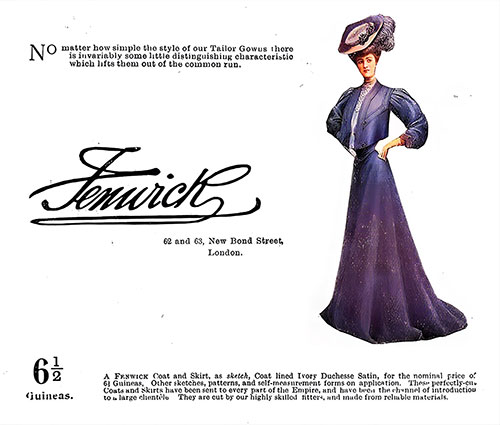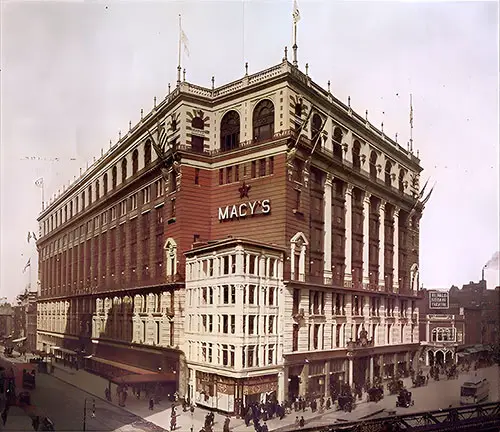Fashion Advertisements

Fenwick’s of London: Edwardian Fashion, Tailoring, and Transatlantic Elegance (1905–1915)
The featured article and accompanying ads for Fenwick's of London are a masterclass in Edwardian style, transatlantic elegance, and the emergence of ready-to-wear sophistication that still carried the soul of couture. Tailored for first-class women who understood that being seen was nearly as important as the destination itself, Fenwick offered an enviable array of daywear, eveningwear, and bespoke suits—crafted in London, admired in Paris, and shipped across the globe.
This content isn’t just for the fashion lover; it’s an essential resource for:
🎓 Teachers and students exploring early 20th-century gender roles, travel, or fashion
🧬 Genealogists reconstructing the style lives of women ancestors
📜 Historians documenting the rise of luxury retail and global fashion exchange via ocean liners

Macy’s on the Move: Department Store Fashion, Mail-Order Magic, and Ocean Travel (1906–1911)
As Seen Onboard the RMS Carmania and Other Cunard Line Voyages
📍 Fashion, Retail Innovation, and Ocean Travel Unite for Teachers, Students, Historians & Genealogists
🧵 Fashion, Innovation, and Transatlantic Commerce: An Educator’s Perspective
This compelling collection of advertisements and historical insights about R. H. Macy & Co. offers a snapshot of early 20th-century consumer culture, fashion, and the growing intersection of global commerce and ocean travel. These pieces, all originally printed aboard Cunard liners like the RMS Carmania, tell a larger story about the evolving American lifestyle—one shaped by innovation, affordability, and fashion-forward thinking.
For teachers, students, historians, and genealogists, this article isn’t just about shopping—it's about the mechanics of modern retail, the fashion journeys of transatlantic travelers, and the early democratization of high-end style.
🛳️ Why Macy’s Was Featured on Ocean Liners
As the largest retail store under one roof in the world at the time, Macy’s wasn't just a New York destination—it was an international institution. Featuring Macy’s in Cunard’s onboard daily bulletins offered travelers, especially women crossing the Atlantic, a gateway to the fashion capitals of the world, with New York at its helm.
Ocean liner passengers, many of whom belonged to the upper and upper-middle classes, were precisely the clientele interested in mail-order fashion catalogs, European styles, and “dressing better at lower cost.” Macy’s leveraged its direct supply chain model to appeal to American consumers hungry for quality at a fair price.
